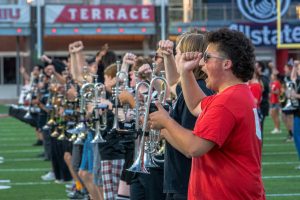Don’t, umm, forget your lines
By Michael Klaas
| February 24, 2003
Start early and land that dream job
By Jeff Goluszka
| February 24, 2003
Kick off the week with a ‘perfect illusion’
By Michael Klaas
| February 24, 2003
SA allocates supplemental funding
By Nick Swedberg
| February 24, 2003
RHA voted top residence hall program in Illinois
By Jessica King
| February 24, 2003
It better be Root Beer for you, kid
By Rachel Helfrich
| February 24, 2003
‘We want fun,’ and we got it
By Casey Toner
| February 24, 2003
Choosing a path
By Matt Knutson
| February 22, 2003
Worth more than Monopoly cash
By Jeff Goluszka
| February 21, 2003
DeKalb welcomes WMKB-FM
By Laura Grandt
| February 21, 2003
Fashion hits the runway
By Shivangi Potdar
| February 21, 2003
Stallions galloped through Convo Center
By Stephanie Gandsey
| February 21, 2003
Advertisement
Advertisement
Advertisement
Advertisement
Advertisement
Advertisement






